- Continue Shopping
- Your Cart is Empty
Honey Fermented Cranberries

What You'll Need
Equipment
- measuring cups and spoons
- fork
- good kitchen knife and clean cutting surface
- glass jar
Ingredients
- 8 oz raw cranberries
- 1-3 inches thin ginger slices
- 1 cinnamon stick
- Zest and juice of one orange
- about 1 pint of raw uncrystallized honey
This recipe, based on one we found on growforagecookferment.com is so simple, but the results are amazing. The tart, tannic burst of red cranberries on the tongue, the note of orange that infuses both honey and berry with citrus notes. Both the berries themselves, and the thinned, red-stained honey, can be used in salads, desserts, and tea, or just eaten off the spoon. These would serve as a beautiful alternative to a traditional cranberry sauce at an autumn feast. Both the honey and the berries, being fermented, will contain friendly, probiotic bacteria, good for gut and tastebuds alike. More to celebrate!
Honey, as we’ve noted before, is a truly extraordinary substance. When harvested from a beehive, the liquid content is stable below 19% water. In this whole state, honey is a preservative, repelling spoilage organisms essentially by depriving them of the water that they need to respirate. When liquid is added to honey, it has less of a preservative, anti-microbial effect. We use this fact to delicious advantage when making mead, or these incredible fermented cranberries. Here, we add the juice of a whole orange to bring just enough liquid to the honey that it can begin to ferment.
The choice of which honey to use is an important one for this recipe. You want honey that is in a liquid state, not a thick, crystallized honey. An uncrystallized honey will blend much more easily with the orange juice and will cover the berries evenly on the first time, without a lot of trapped air spaces. It’s important to have as little air as possible in the jar with the berries and to keep the berries submerged beneath the honey liquid to ensure safe fermentation. Honey that is crystallized is often heated to return it to a liquid state; if this is what you are working with, make sure that the honey is heated gently at low temperatures, in order to keep the microbial content of the honey intact. We want all that bacteria to initiate fermentation since there is no starter culture in this ferment. If you only have pasteurized honey, you could add a tablespoon of whey to the ferment to kick it off, but otherwise, this is not necessary.
Makes about a quart.
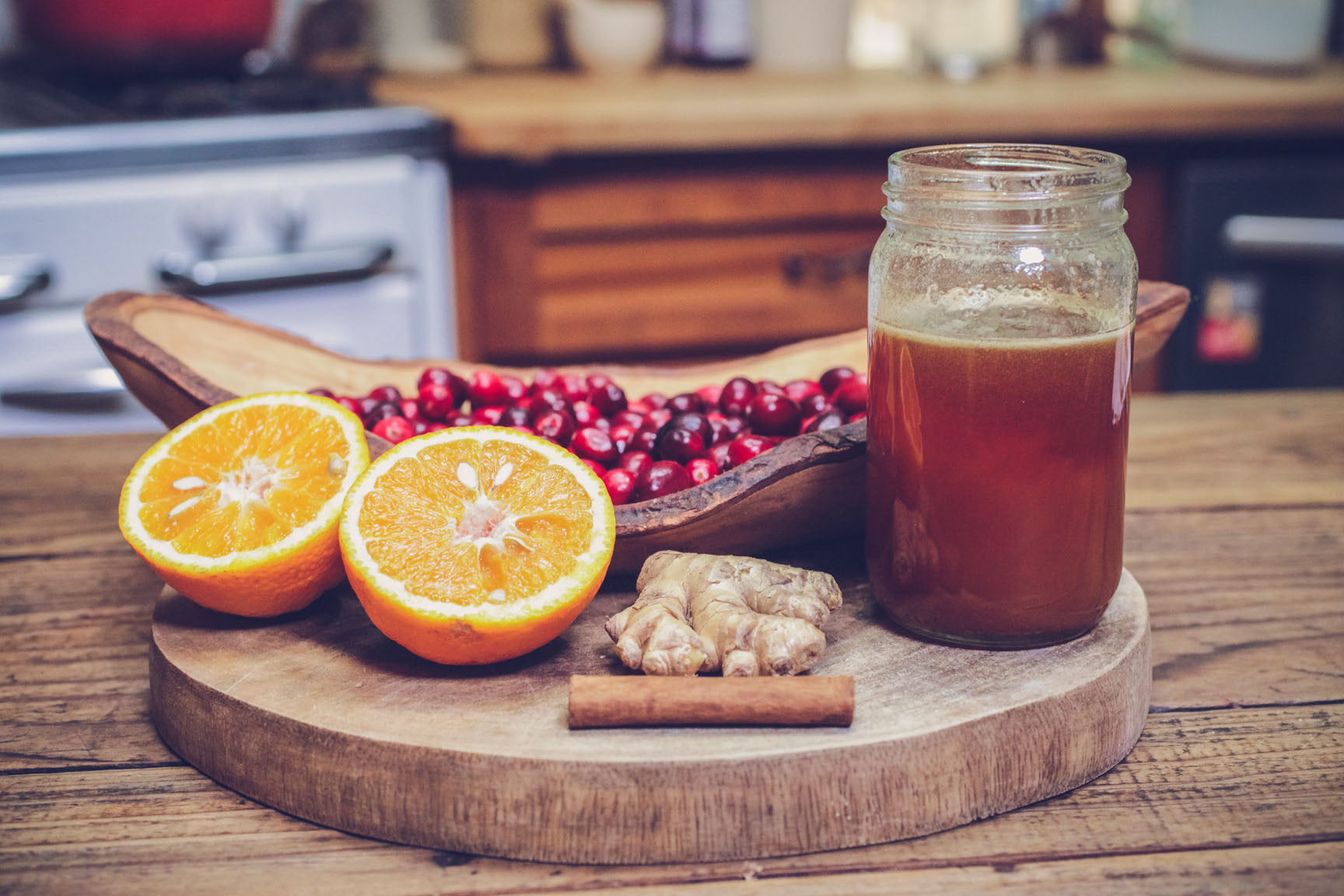 Directions
Directions
Wash and drain the cranberries.
Puncture each berry with a sharp fork, so that it does not float in the honey. 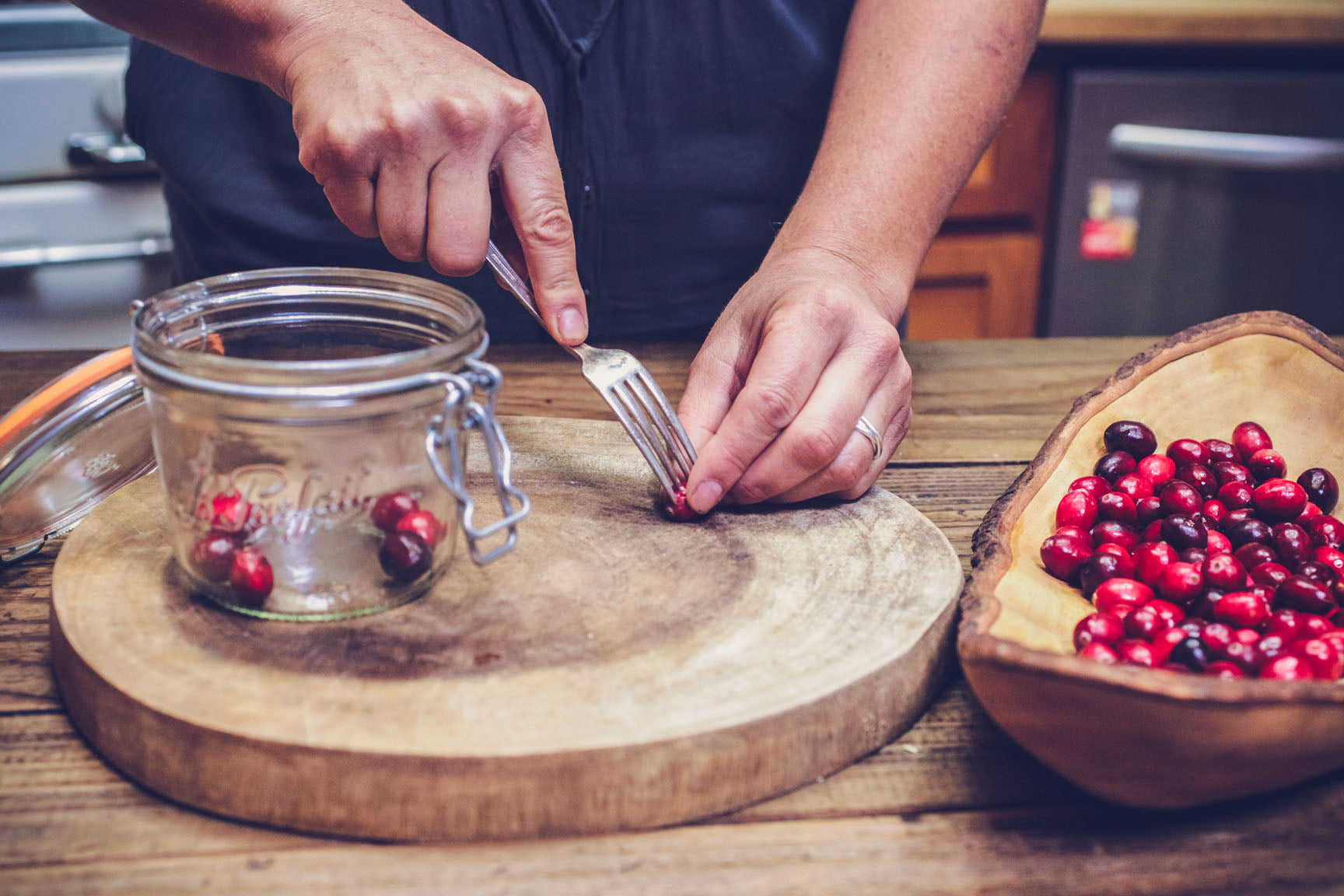 This also allows the honey to penetrate the interior of the tough-skinned berry, allowing fermentation to happen more swiftly. Alternatively, If you want more of a relish-like texture, you could run the berries through a food processor. But we like them best whole and perfect, just as they are, with only a little gentle stabbing.
This also allows the honey to penetrate the interior of the tough-skinned berry, allowing fermentation to happen more swiftly. Alternatively, If you want more of a relish-like texture, you could run the berries through a food processor. But we like them best whole and perfect, just as they are, with only a little gentle stabbing.
Thinly slice 1-3” of ginger.
Place the ginger, cinnamon stick, and cranberries into a glass jar. 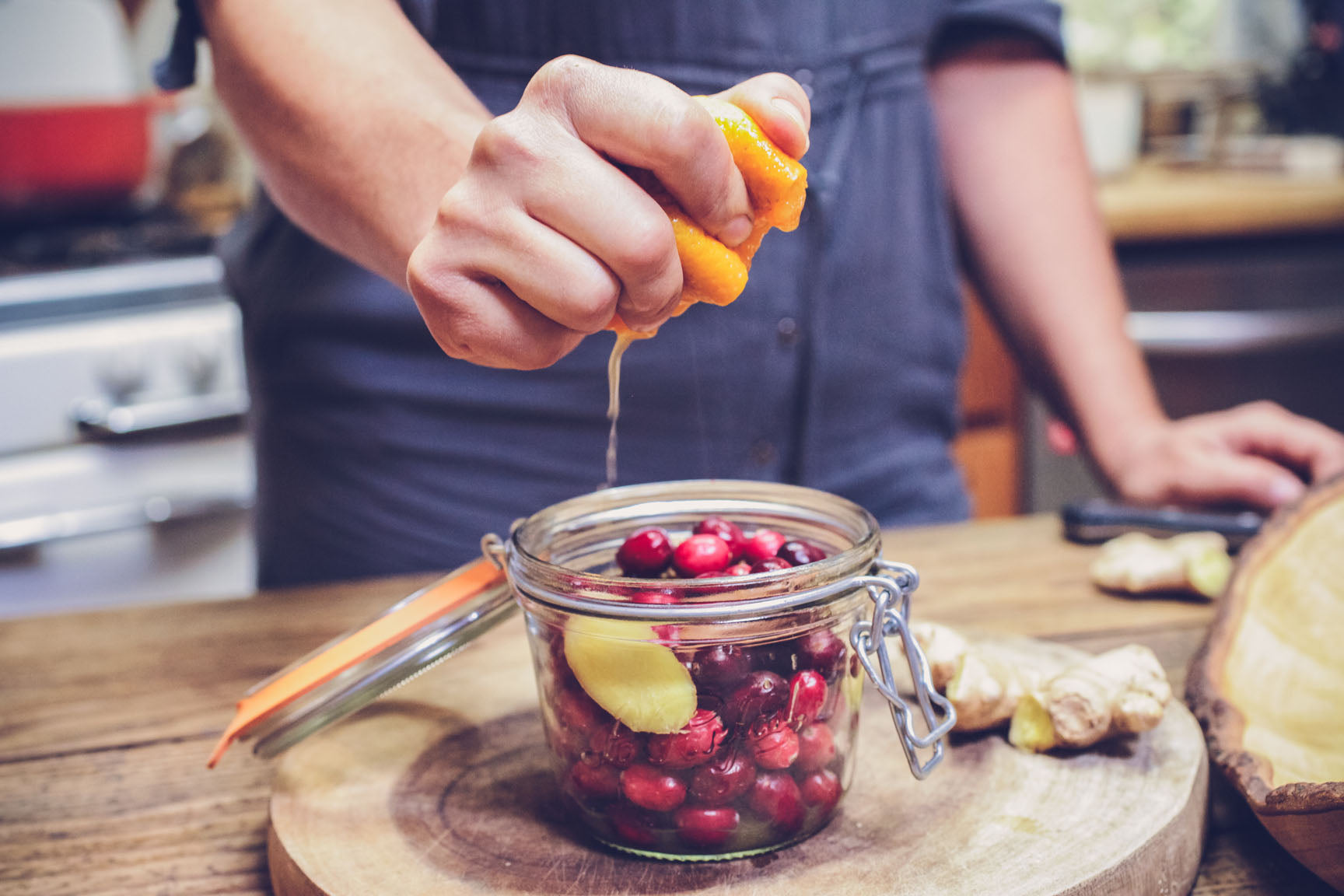 Zest the orange over the top, then squeeze in the orange juice.
Zest the orange over the top, then squeeze in the orange juice. 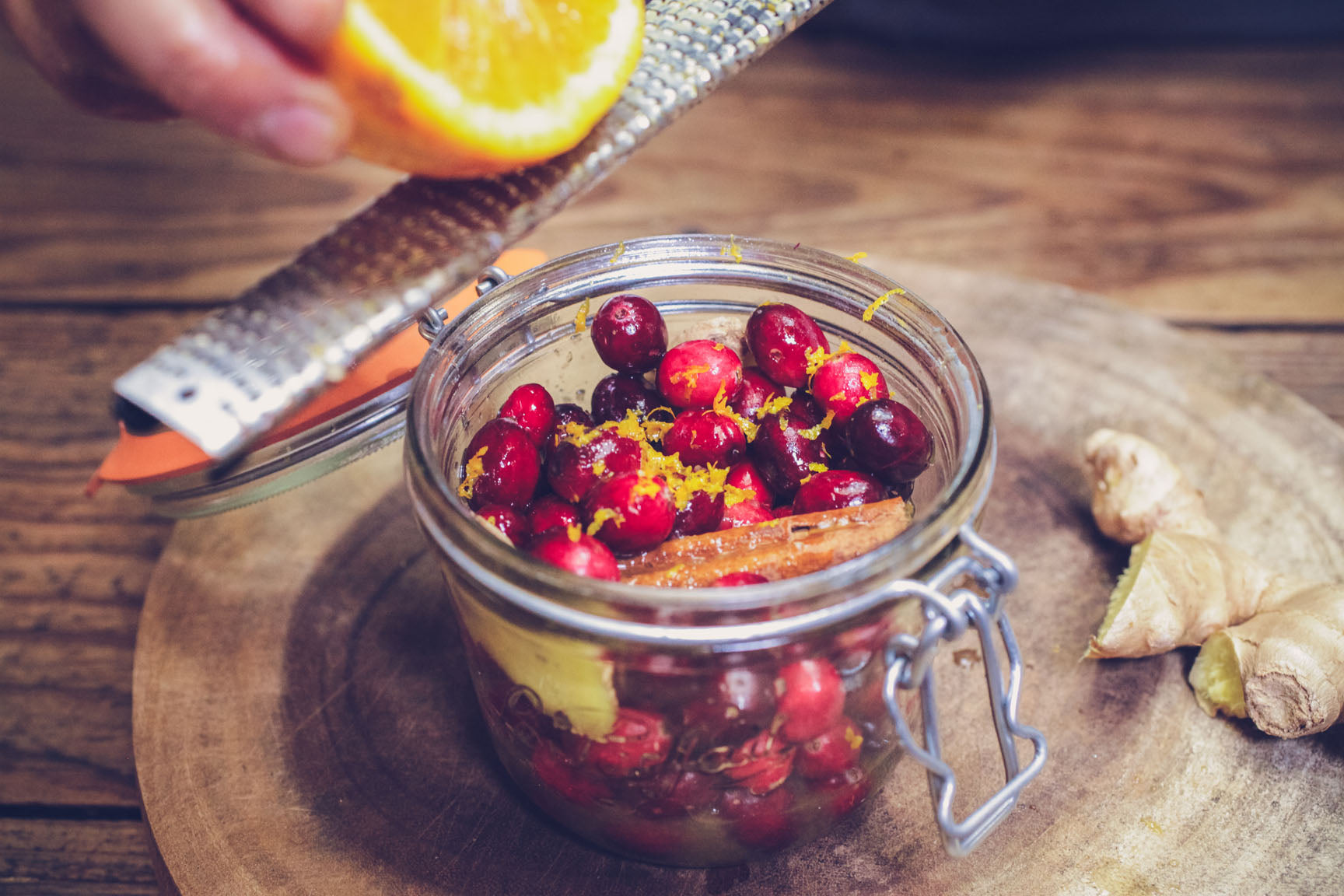 Pour the honey over the top of the mixture, filling the jar to the top. Shake to combine the honey and the orange juice.
Pour the honey over the top of the mixture, filling the jar to the top. Shake to combine the honey and the orange juice. 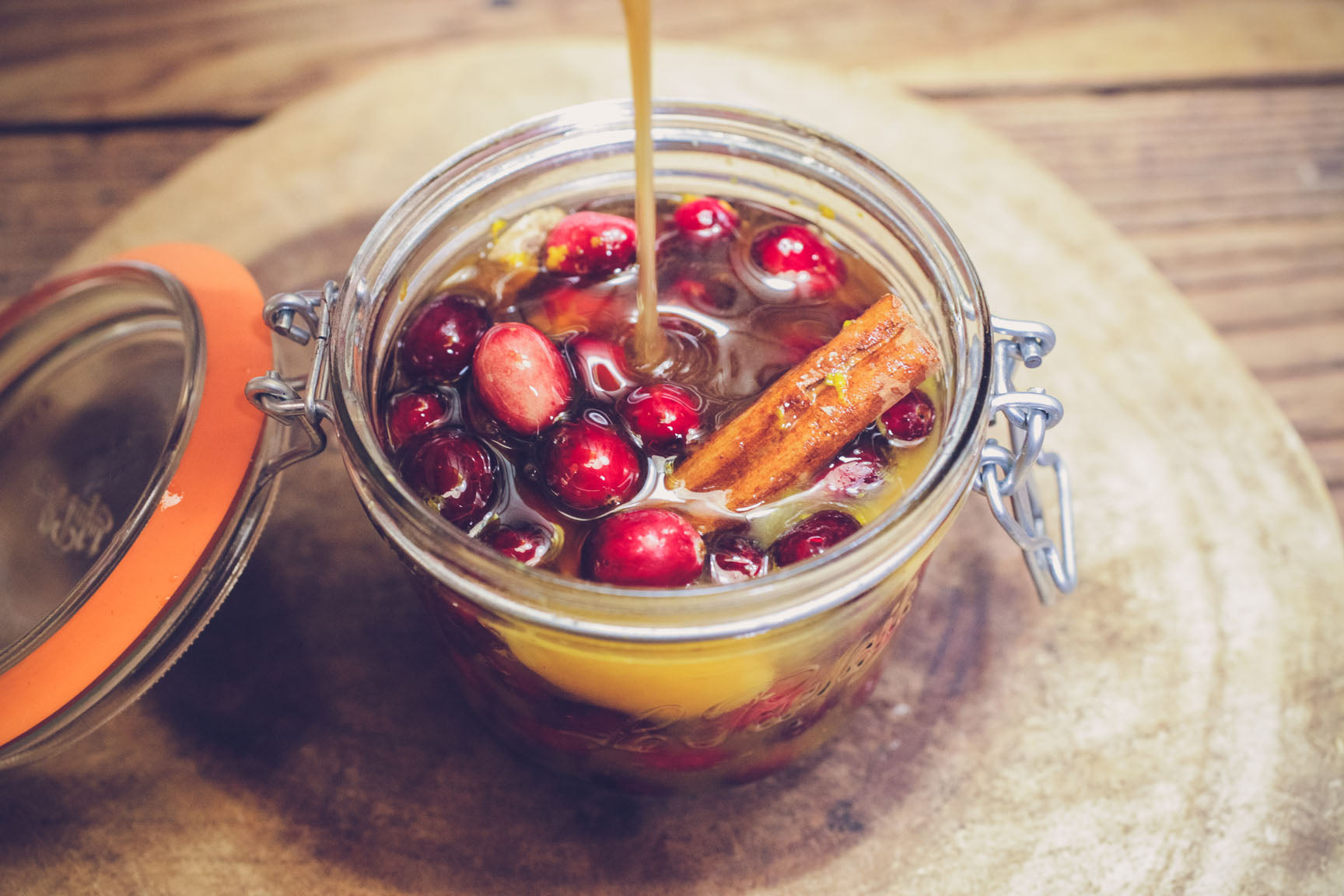 If using a mason jar, you can secure an airlock on this ferment, or be prepared to “burp” the jar every day for the first few days to release the CO2 that builds up as a result of fermentation. When we use a jar like this Le Parfait clamp-top, we leave the orange rubber seal off for the first few days, but clamp the jar shut, to allow the gasses to escape. After 3 days, we replace the gasket onto the jar, and thereafter check it every few days, releasing any pressure that builds up.
If using a mason jar, you can secure an airlock on this ferment, or be prepared to “burp” the jar every day for the first few days to release the CO2 that builds up as a result of fermentation. When we use a jar like this Le Parfait clamp-top, we leave the orange rubber seal off for the first few days, but clamp the jar shut, to allow the gasses to escape. After 3 days, we replace the gasket onto the jar, and thereafter check it every few days, releasing any pressure that builds up.
Here we used a glass Weck jar lid as a weight to keep the cranberries below the liquid. 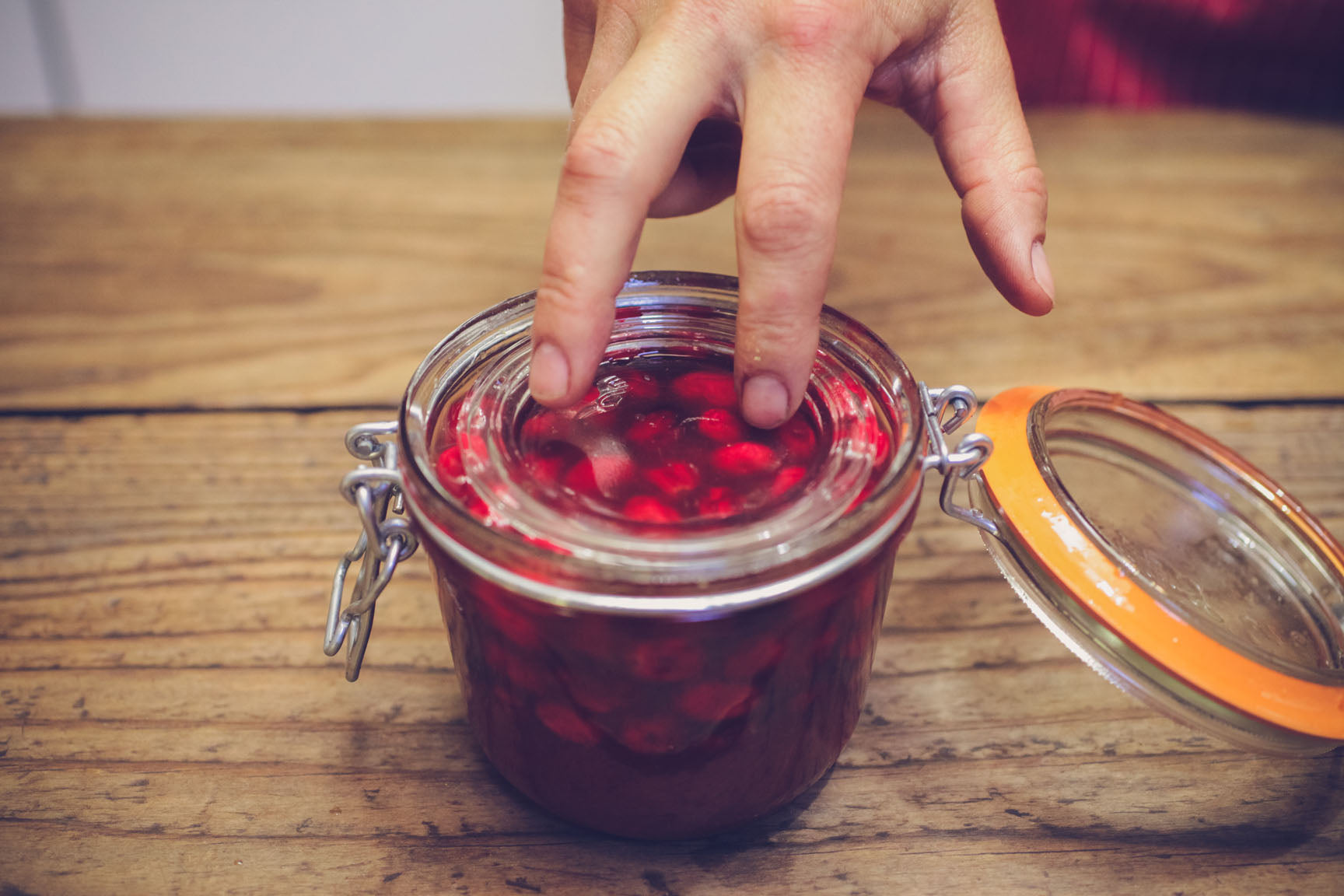
As the cranberries ferment, small bubbles will form in the jar; shake it every now and then, and burp the jar, to release the trapped air.
The berries are transformed after even just a week of fermentation, but this ferment can proceed for several months if desired. The honey grows redder, and more runny, as time and bacteria do their work. The berries soften a bit but still retain a satisfying burst of tart sweetness on the tongue.
Use the berries in a salad with goat cheese and cooked grains, or spoon them over desserts, or into yogurt. They make a beautiful probiotic side dish at a great feast, all on their vibrant, crimson own. As for the honey, it can be incorporated into dressings, spooned into tea or over desserts, or used as a finishing glaze for roast meats.
Over to You
It’s part of our mission here at Mountain Feed to help you make delicious, sustainable, homemade food more often. Stop by and say hello on Facebook, Twitter, Instagram or Pinterest. Or, as always, you can do it the old-fashioned way and come by the store to speak with one of our in-house experts.

 Directions
Directions